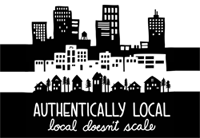A woman was taken to Harborview Medical Center this afternoon, after a bad sledding run landing near the southern end of Ravenna Park.
Seattle Fire Department Public Information Officer Kyle Moore contacted SFD staff at the scene and got us the details.
View NE 54th St sledding accident in a larger map
The 19-year-old college student was sledding down NE 54th Street around 3:30 PM when she slid over a jump, landed on some rocks, hit her head, and lost consciousness. She had regained consciousness by the time Seattle Fire Department units reached her, but she was taken to Harborview in a stable condition as a precaution.
Many thanks to Capitol Hill Seattle’s own Justin Carder who provided the tip over twitter.
____________________
Please, people. For goodness sake: Make GOOD sledding choices.

Timmy was never the same after the extraction.
(Just kidding. This was an object d'snow art on NE 75th St from the snows of late 2008.)
____________________
UPDATE (Thursday afternoon): Steve Sorbo (@macsosguy) caught some NE 54th Street sledding action for us today at the scene of yesterday’s crash.











Stay Connected